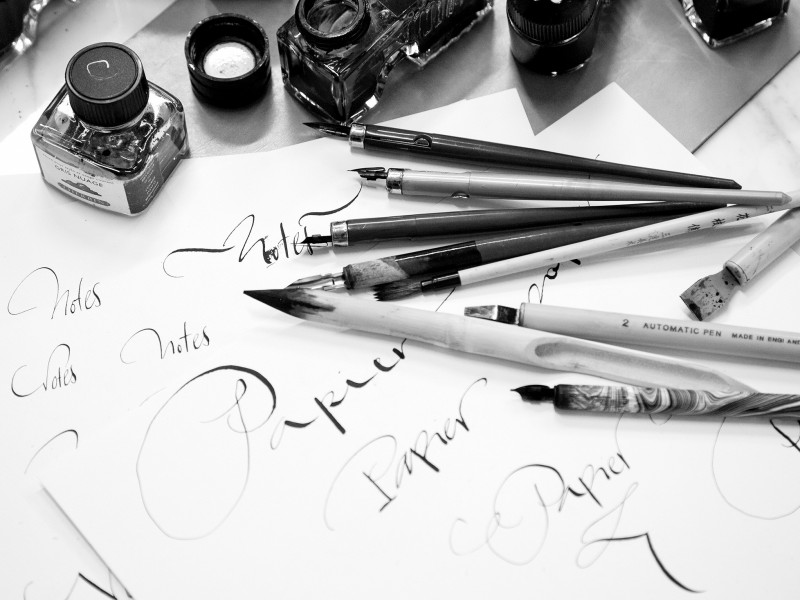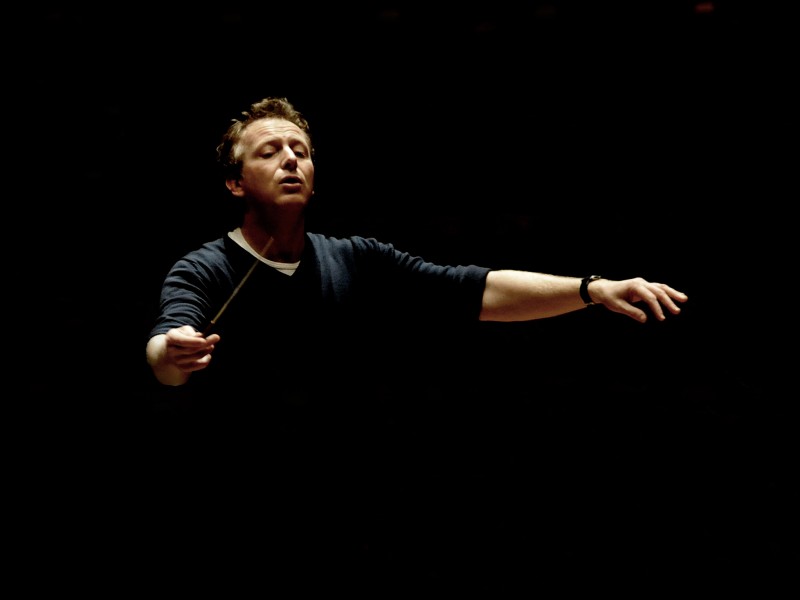It’s a fine winter’s day in central Amsterdam, a city so preternaturally handsome it should come with its own mirror and grooming kit. Tall merchants houses standing proud in the sunshine, bathed in a flattering light, huddle together on the banks of its famous canals and all seems well in this picture-perfect world. Observing the urban idyll it’s easy to see why someone would make this place their home.
One such émigré is the American artist Geoffrey Lillemon who moved here six years ago, lured by the city’s easy-going spirit and welcoming bonhomie. “What’s not to like?” he observes, pushing his bike through narrow streets, expertly dodging the trams, tourists and other bicycles, which confront us at every turn.
When the wind picks up and the temperature drops, we take refuge in the lobby of the magnificent Conservatorium—originally a grand classical music college, now expertly renovated into one of Amsterdam’s finest hotels. The structure, built across a wide city block, is solid 19th century, but the addition of a giant glass atrium brings it beautifully up to date. It’s this clever juxtaposition of old and new, traditional and futuristic, that seems fitting for our meeting. Lillemon, while trained as a conventional artist and who still occasionally paints with oil, is better known for the modernity of his digital work and has fast become a leader in the field. Imagine the principles of all great art: form, line, landscape, figuration—but manipulated for the internet generation.
They call it ‘Net Art’—taking old-school mediums like painting and drawing, then adding a smarter level of interactivity and animation to create digital pieces that use the internet as a gallery. “If people ask me, I say I’m a trans-media artist and that I do story telling across many different mediums, focusing specifically on characters in the digital realm.”
That’s a lot to put on a business card.
“Yeah! Maybe a digital media artist is an easier way to talk about it. Essentially, strong storytelling is where I’m at,” he says, a slight Dutch twang infiltrating his accent.
Geoffrey is an interesting looking character. He puts me in mind of James Fox in Nicolas Roeg’s 1970 film Performance. Not the uptight straight guy at the start of the movie, more the later, louche version transformed by hallucinogenics and a fateful meeting with Mick Jagger’s Turner. With his grown-out strawberry blonde hair and round glasses, he comes across as a child of the 1960s (although only 33), yet he’s a latter day hippie infected by an enthusiasm for new ideas and technology. To call him a mere artist is to undersell him. Alongside multiple projects across a whole range of media, he is a Director, Producer, and the driving force behind a host of ventures. It’s a world where fashion, music, video and art collide. Where pixilation and unreality is his palette, and imagination knows no bounds.
Obviously the best place to view his work is the internet itself, and more specifically his mind-bending personal website. As a showcase, it is unrivalled in its archive and breadth. But it’s the sheer audacity and clout of the visual language which is most apparent. Here you’ll find rolling banks of lipsticks as corkscrews, four-breasted creatures adorned with blue nipples, glutinous pink ear wax, and a multitude of frazzed-out fractal images all vying for your attention—easy on the eye it is not. Click within and you are led into a dark and often disturbing world. Computer-generated landscapes are punctured by digital laser beams, sex and sexuality is lampooned, then blended with cartoon horror and eyeballs pop out of skulls as if in some hi-tech ghost train. Nothing is ever quite what it seems.
“The interesting thing about the work I do, is I get much more of a positive response from women,” he laughs, “and I don’t know why. One girl came up to me recently and said that all of the characters that I’ve been doing recently, which are highly sexual—long nipples, wild and intense—are what her girl friends love but her guy friends are kind of grossed out by.” No wonder Miley Cyrus is a fan. (More of her later)
In the meantime, it seems essential to get a little back story. What could possibly lead a boy to such visual extremes? Born in Texas and raised in North Dakota, he talks affectionately about an eccentric grandmother who owned a second-hand bookstore, and his mother, who, by all accounts, was “a bit schizoid”.
“The law was a little bit more loose back then,” he explains, sipping on a perfect cappuccino. “At the age of eleven, we were riding motorcycles without helmets and swinging from ropes over dangerous rivers. My cousins were a bit red neck, but then red necks are the best people to hang out with when you’re a kid.”
Summers were spent at Cartoon Camp—organised retreats where this budding artist learned to draw and animate. “I’ve always been attracted to drawing and cartoons. I was drawing all the time back then, and in a sense I’ve been trying to get back to where I was as a child. I lost some of that, which we all do—we lose our childhood innocence. It’s because you start to have hesitation, and you know what is good, and what works and what doesn’t. You lose the honesty of drawing without thinking about it.”
He lights up reminiscing about these formative years, watching Scooby Doo, Max Fleischer cartoons and plundering books from his grandmother’s store, “I didn’t want to read Gone With the Wind at that age,” he says. “I was into Al Jaffee and the MAD magazines. I was always drawn to the absurd side of things, like Ren and Stimpy and Beavis and Butthead. I loved the absurdity of those things—they were always full of booger and poop! What I’m working on now is a reflection of that because it’s primarily about characters. I think about what a character would do if they stubbed their toe, or if it was cloudy outside, much more so than if it was an abstract composition that didn’t have a name or a personality. I think a lot of that comes from watching cartoons. Cartoons have much more extreme gestures.”
After a stint at Denver University, Lillemon moved to Charlotte, North Carolina, where he worked for a start-up design firm. “Of course they went bankrupt in the ‘dot.com crash’, but it paid for me to go to Europe and I felt self-directed to culture myself a little bit.” Returning to the States, he ended up at the Minneapolis College of Art and Design, studying illustration, design and contemporary painting, and it was here that he first started toying with the idea of Net Art. “I had never heard of that term,” he admits, “but this idea of taking the paintings I was making and animating them in Flash became my thing. Essentially I was putting things up online because I liked them, but then people started responding really strongly because it was audio and visual, and it looped, and it was running in real time at forty to fifty frames a second, so it already had a strange look to it. I started to realise that the Internet was an art gallery, and as a viewer you could have a one on one experience with the artwork as it was intended. You’re not looking at a painting in a book, you’re looking at the art that is made for this format.”
Collaborations followed, work was conceived and executed under a variety of names, and technology such as immersive 3D ocular goggles brought life and attention to his work. Not that attention was hard to come by. It takes either a vivid imagination or hard drugs to produce the absurd, often terrifying images that make up his oeuvre. Where this evolves from is anyone’s guess. Had he ever worked on acid? “Yeah, I have,” he admits. “Although I don’t think I was able to do it. I tried. And then I opened up an email and read something and got thrown off course! I find that world interesting though: magic mushrooms, DMT and ayahuasca. There’s obviously something about the ‘other dimension’ that fuels my imagination.”
It’s this lysergic visualisation, based on human shape and form, that’s led him to the world of fashion. To date, he has collaborated with the designers Bernhard Willhelm and Iris van Herpen, creating films, textures and patterns that have contributed to their collections.
“I work with Bernhard on the pattern design, and I can do textile design because the work is so textile heavy anyway so I understand how to work with that. As far as working with fashion clients and collaborating with digital art, the two things aren’t competing with each other. It’s more like, this is what I do and this is what the designer does, and you combine them and it emerges quite nicely. So I really see those projects as collaborations. They deal with the clothing and I deal with how to make a mood out of the piece.”
In a much more commercial way, perhaps Lillemon’s most notable collaboration has been with the aforementioned Miley Cyrus. The visuals he created for her 2014 Bangerz tour—the singer’s head transplanted on to the body of a plucked chicken, his trademark googly eyes, a plethora of eggs, both hard boiled and fried—are both puerile and engaging.
Related Features
-
53
-
-
-

